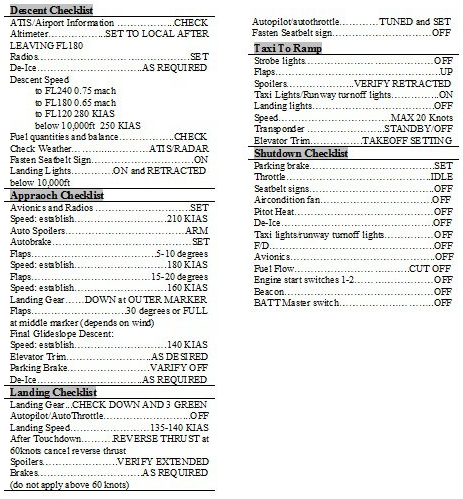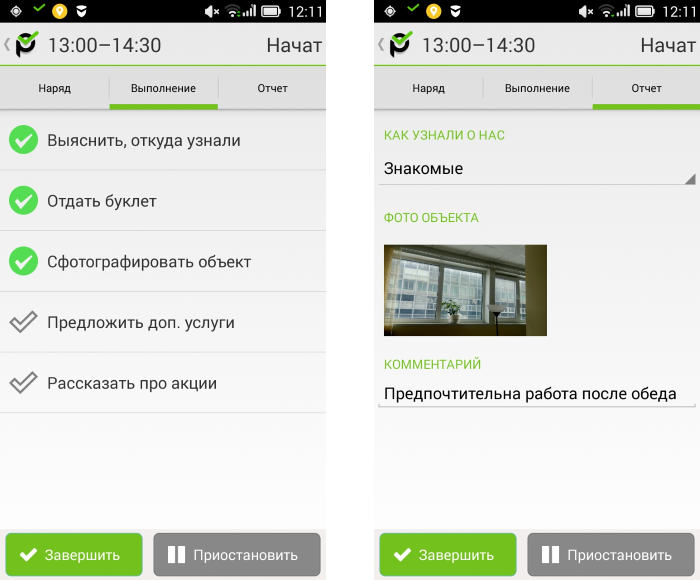Increase employee productivity: how to optimize workflow using checklists

Business owners and company executives always think about what can be improved and how to improve employee performance. For this purpose, various technologies are used, ranging from digital, such as virtual shared desktops and corporate social networks to the whole complex of systems for controlling employees, working hours, arrivals and departures of people. Workspaces are also optimized - it is worth remembering the distribution of openspaces.
However, one of the easiest and most inexpensive ways to implement workflow optimization over decades has been checklists.
')
What does the check list look like?
In simple terms, this is a to-do list for the day. When an employee performs the next task from this list, it is crossed out (or marked). There is an opinion that the checklists came to us from aviation, where, before the flight, the first pilot checks everything according to a special document, and the second pilot checks how the first one checked. Later, the creation of checklists passed into the corporate culture.

Pilot Checklist Example
In some companies, the checklist is written every morning on the blackboard during scheduling (this is often practiced, for example, in the media). Often, checklists are created in personal notebooks or diaries. In some companies use the option with lined drawing paper and stickers.
What is it for
It is impossible to keep everything in mind, especially if the action plan was not drawn up for the next hour, but, for example, for the next week. A checklist is also necessary in order not to miss important steps in certain technologies. For example, a checklist with phrases for the dialogue operator in a call center or a checklist for setting up complex equipment.
When there is a plan of action before your eyes, the work goes more efficiently, especially if the order of the tasks can be random, you can rank them in the checklist in order of importance, so you can be sure that some trifle will not be missed. carelessness.
Thanks to the check-lists, there is no need for a long training of employees. Instead of several times explaining to him the order of actions, you can paint it point by point on the checklist.
Checklists and technologies
In the era of gadgets checklists very successfully go into the electronic form. For example, their use helps to significantly improve the efficiency of work of field workers - from installers of Internet equipment and builders to cleaners and couriers.
It is rather difficult for the company’s management to control the quality of the work performed - it is impossible to leave for each object, and feedback from the client is not always an objective assessment.
Also, most companies in the field of exit services do not have prescribed standards for solving problems; a mobile employee simply performs a set of actions that, as it seems to him, will enable faster and better results.
This raises a number of problems - it is impossible to guarantee quality, important stages of work can be missed, equipment installed "by eye", etc. Moreover, the quality of the work does not guarantee the work experience of the staff - mistakes are made by both beginners and experienced masters.
Using “ordinary” checklists on paper is unlikely to help here, because when working remotely, it is very difficult to monitor the execution of each item - nothing prevents the employee from marking the task, but not performing it.
The introduction of the practice of compiling photo reports upon completion of the order does not help either. The photo does not always show the quality of work, there are difficulties with transferring files to the office, many “forget” to take a photo, etc.
It is quite another thing when the check list compilation function is automated and moved to a special application, as was done in the Planado service. In it, the check-list is activated at the start of the order - the employee must perform actions sequentially, putting down "ticks" in the application. It is impossible to jump over points - the system will not allow completing the outfit. Upon completion, a photo report is sent to the office using the same application.

This allows you to guarantee compliance with the technology - even employees seeking to optimize their work will not be able to "bend over" and miss an important step in the course of the task. And for beginners, the presence of checklists, which clearly spell out the sequence of all actions, helps to avoid mistakes
Hope for the checklist
The introduction of checklists and software control tools into the work, of course, increases the efficiency of work and allows you to avoid many mistakes, but does not solve all problems at once. Proper business management plays a very important role: the introduction of other work optimization technologies, such as tracking an employee’s location on a map, controlling his movements and time spent in the workplace.
It is important that employees understand that such measures are being implemented not to curtail their freedoms and rights, but to optimize and improve the efficiency of the work process. And besides the carrot there is a gingerbread - bonuses for achieving the agreed results, etc. If managers are able to convey to employees the reasons for introducing additional control tools and the benefits that this will give to the business and to them personally, this will be of great help.
Of course, there will always be those who will oppose the use of technological means and will begin to look for ways to deceive them - you can’t do anything with such people, because they think not about good work, but about how not to strain themselves and deceive the "superiors" once again. What to do with such employees - each manager decides for himself, but, in any case, their attempts to “cheat” will not go unnoticed.
For those who can and want to work honestly, checklists will be a good and convenient tool that allows you to achieve high results and receive the appropriate reward.
Other interesting articles about increasing the productivity of workers from the team " Latera-Planado ":
Source: https://habr.com/ru/post/312850/
All Articles